Charles Estienne (1504-1564) was a French printer and anatomist who in 1545 printed one of the first anatomies to include illustrations1. This book, De dissectione partium corporis humani libri tres (On dissection of the human body), includes 62 full-page woodcuts printed from 56 woodblocks, each receiving from the start attention for their eroticism and novel construction.
Instead of creating original woodblocks for his illustrations, Estienne recycled existing woodblocks originally meant for other works: he filled portions of blocks depicting nude human figures with blank wood plugs, onto which he engraved the desired anatomical details.1 The male figures are perhaps taken from unpublished anatomical drawings by Rosso Fiorentino; the female forms, it has been suggested, from Gian Giacomo Caraglio’s set of prints Loves of the Gods.2
What I love most about these cuts is the ingenuity in their conception and construction—they’re like a very early form of quasi-collage—and the dramatic poses (big meme template potential here, folks). A few of my favorites follow. (In many of the images you can clearly see the evidence of Estienne’s mash-ups in the white-lined boxes around the anatomical portions, and subtle shifts in the hatching.)
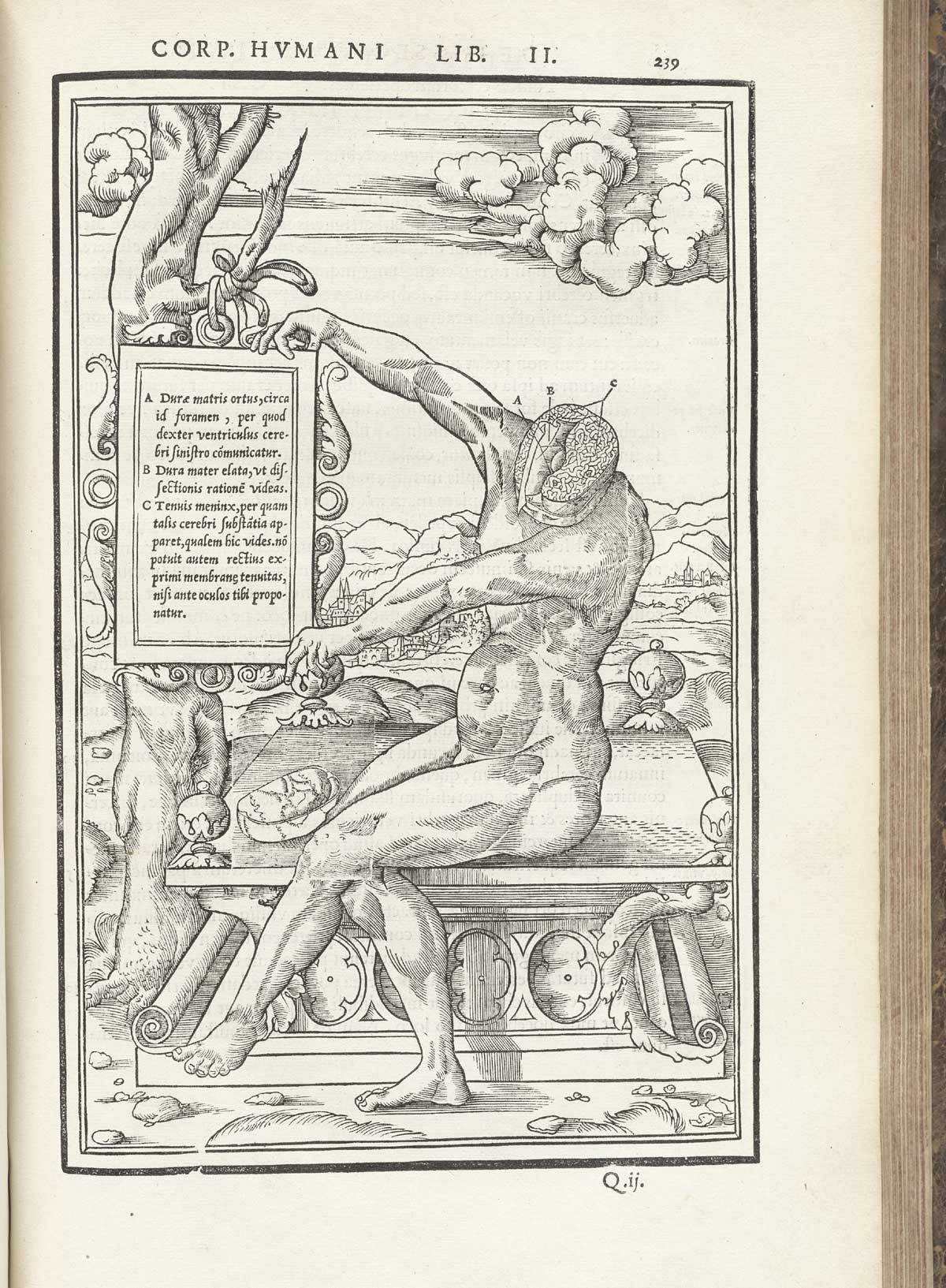
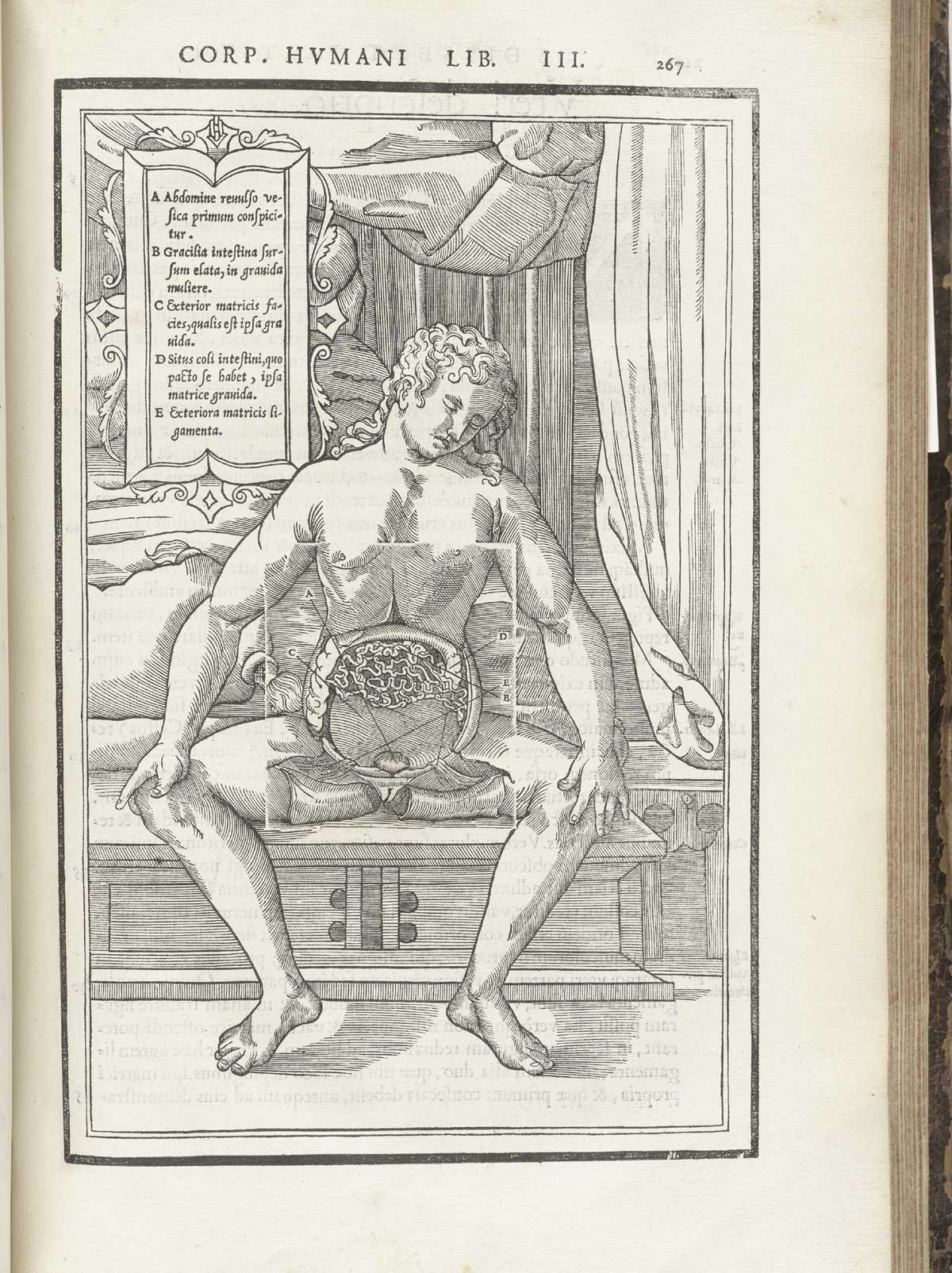
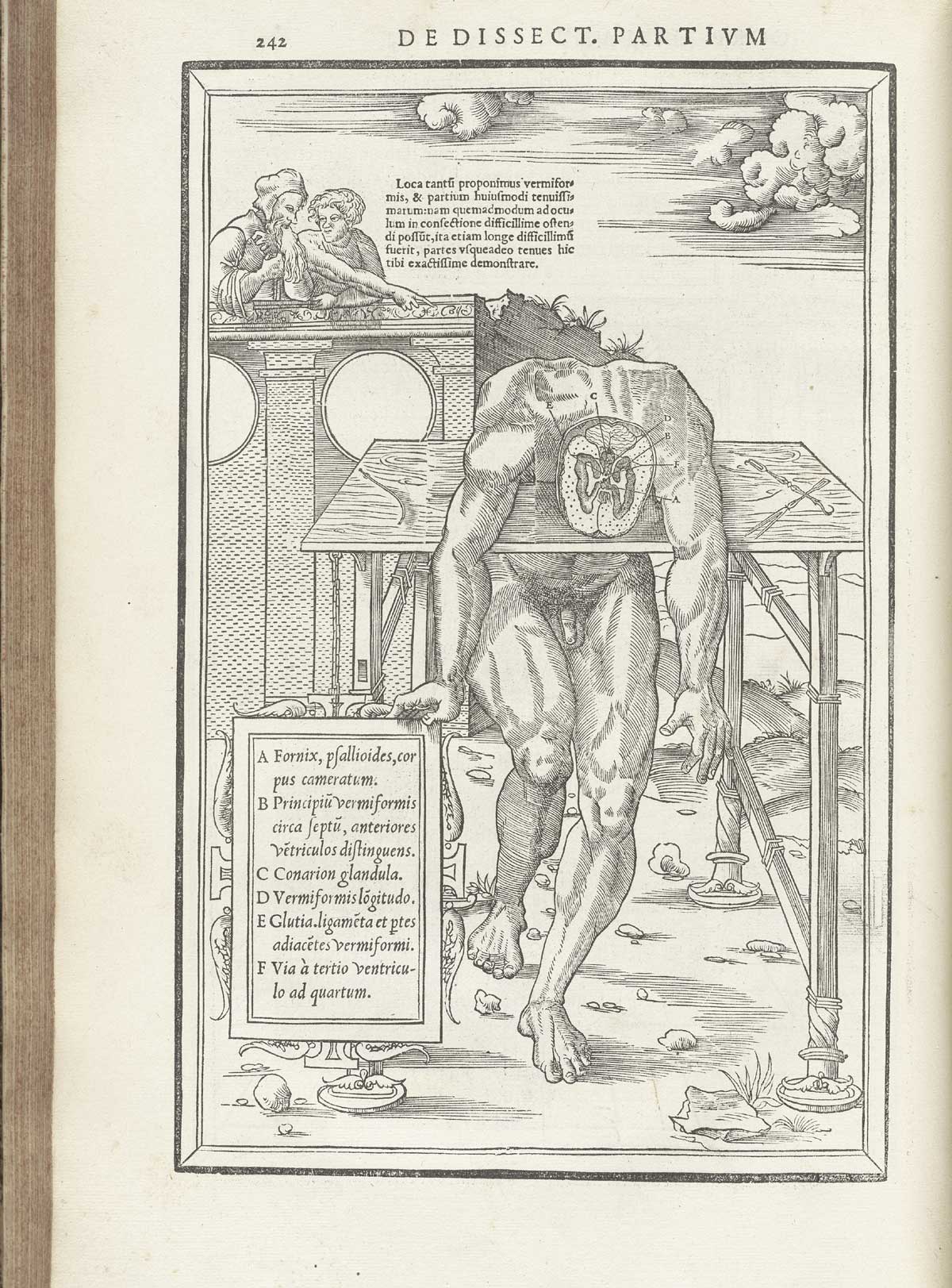
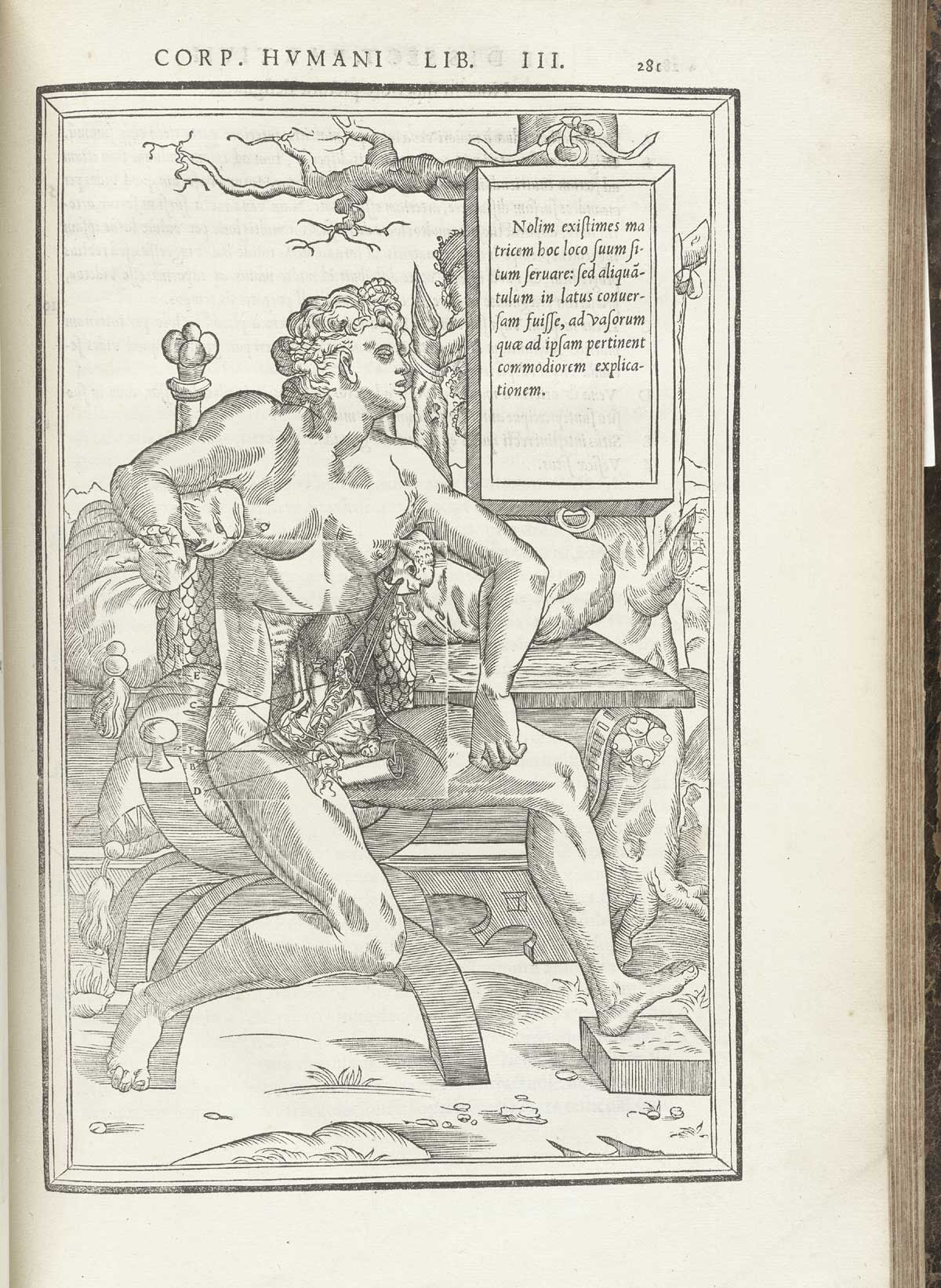
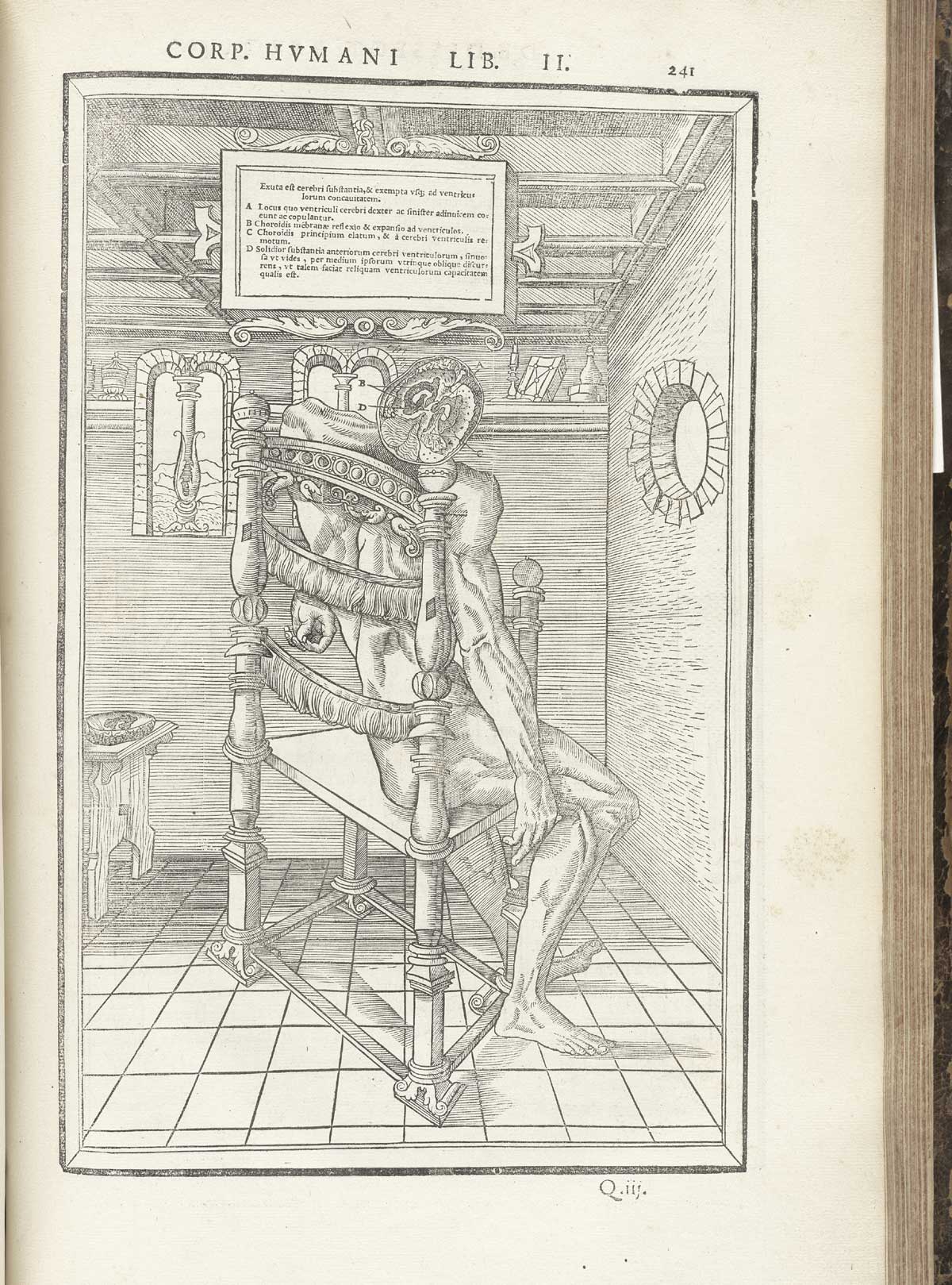
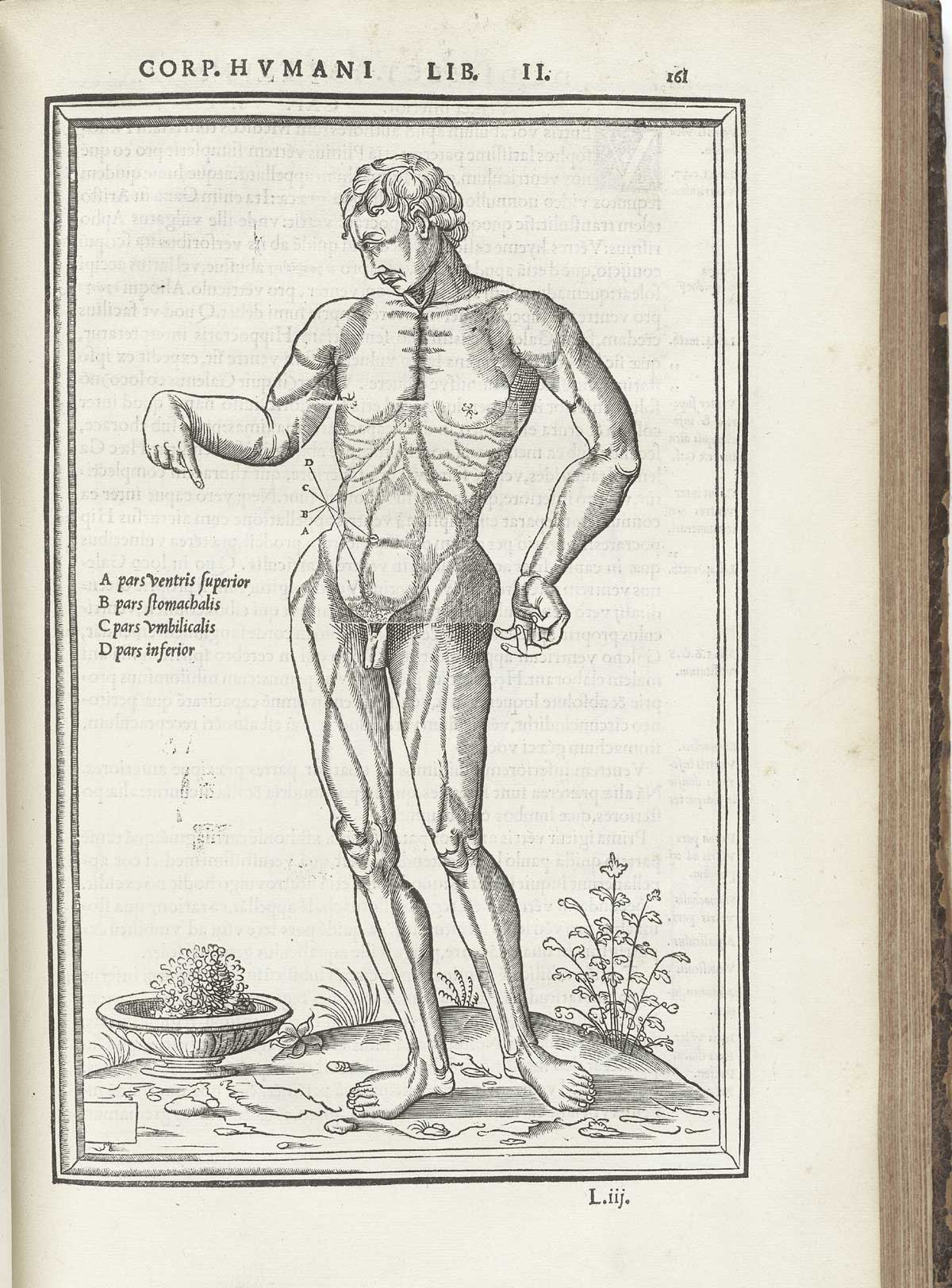
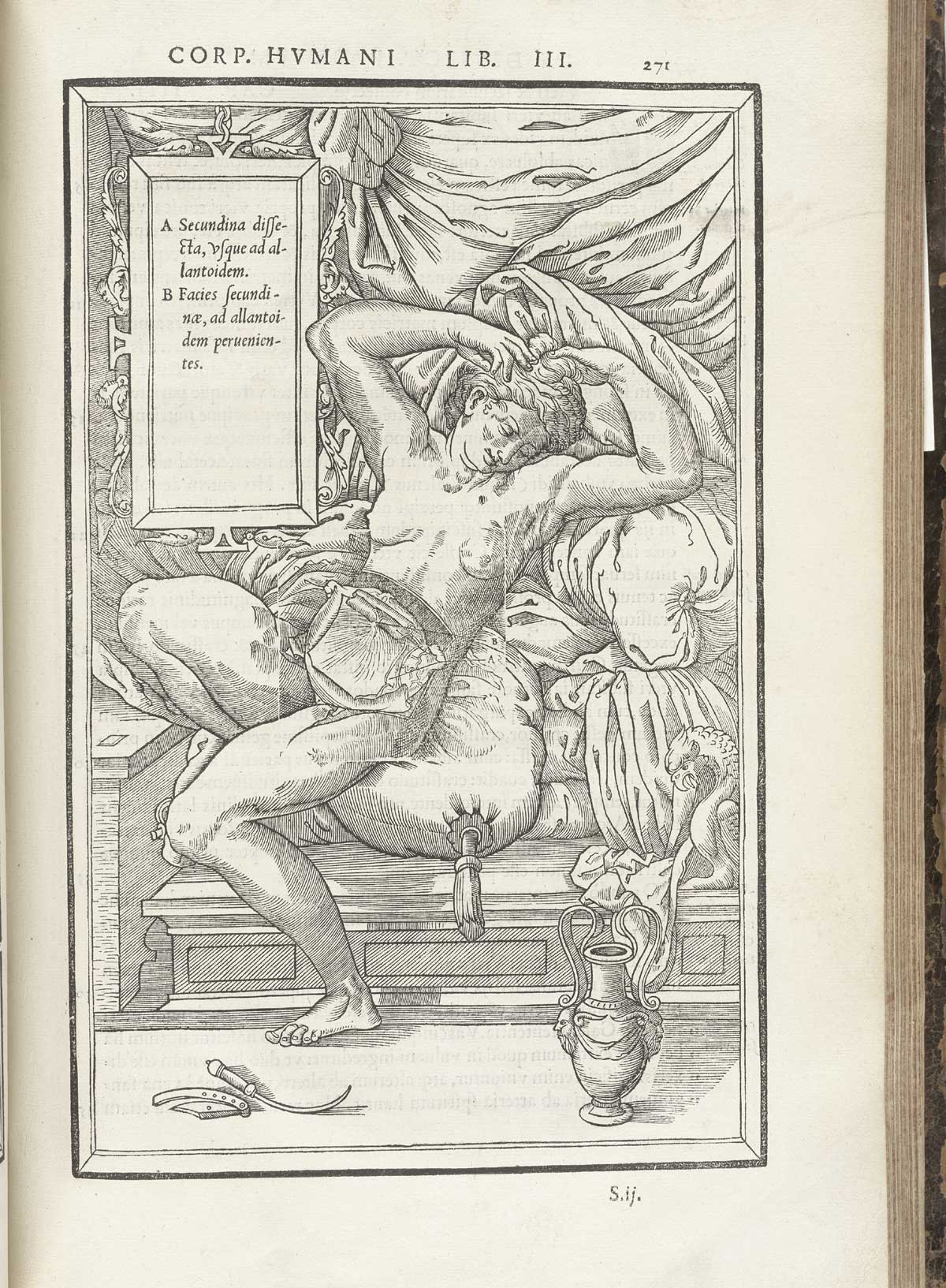
All images courtesy Historical Anatomies on the Web, National Library of Medicine, National Institutes of Health. View the entire book in the National Institutes of Health’s online collection.
Notes, etc.
- See page 195 of Keith Houston‘s The Book: A Cover-to-Cover Exploration of the Most Powerful Object of Our Time.
- See Lot 13 of Anatomy as Art: The Dean Edell Collection, (historical) Christie’s catalogue entry.